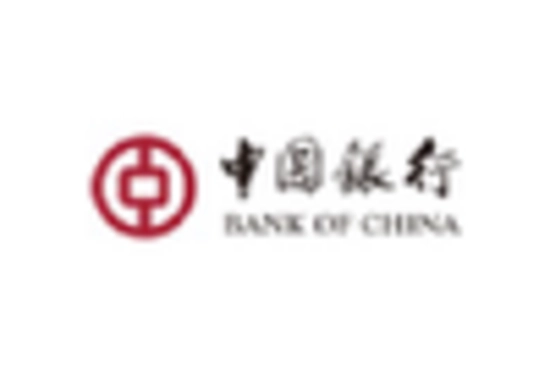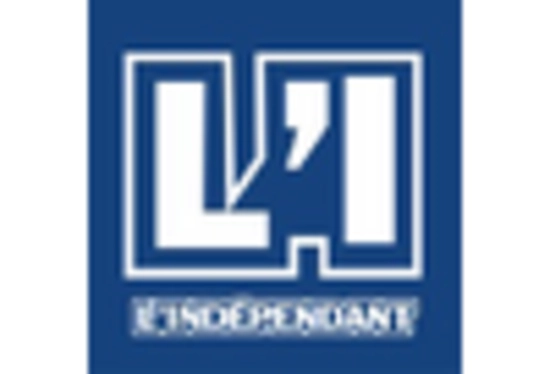Expansion of Healthcare Infrastructure
The ongoing expansion of healthcare infrastructure, particularly in emerging economies, is likely to bolster the Medical Gases and Equipment Market. Investments in hospitals, clinics, and specialized healthcare facilities are increasing, driven by the need to accommodate a growing patient population. For instance, the establishment of new healthcare facilities often includes the installation of medical gas systems, which are essential for patient care. This expansion is not only limited to urban areas but is also reaching rural regions, thereby broadening access to medical gases and equipment. Consequently, this trend is expected to create substantial opportunities for manufacturers and suppliers in the market.
Regulatory Support and Standardization
Regulatory support and standardization play a crucial role in shaping the Medical Gases and Equipment Market. Governments and health organizations are implementing stringent regulations to ensure the safety and efficacy of medical gases and equipment. Compliance with these regulations is essential for manufacturers, as it not only enhances product quality but also builds consumer trust. The establishment of standardized protocols for the production and distribution of medical gases is expected to drive market growth, as it facilitates smoother operations and reduces the risk of contamination. This regulatory landscape is likely to encourage innovation and investment in the market, further propelling its expansion.
Increasing Prevalence of Chronic Diseases
The rising incidence of chronic diseases such as respiratory disorders, cardiovascular diseases, and diabetes is a pivotal driver for the Medical Gases and Equipment Market. As these conditions necessitate ongoing medical intervention, the demand for medical gases like oxygen and nitrous oxide is expected to surge. According to recent data, the prevalence of chronic respiratory diseases is projected to increase, leading to a heightened need for medical equipment that administers these gases. This trend indicates a growing market for both gases and the associated delivery systems, as healthcare providers seek to enhance patient outcomes through effective management of chronic conditions.
Rising Awareness of Home Healthcare Solutions
The growing awareness and acceptance of home healthcare solutions are significantly influencing the Medical Gases and Equipment Market. Patients are increasingly opting for home-based care, particularly for chronic conditions that require long-term management. This shift is driving demand for portable medical gases and equipment that can be used in home settings. The market for home healthcare is projected to expand, with a notable increase in the use of oxygen therapy and other medical gases in residential environments. As a result, manufacturers are likely to focus on developing user-friendly and efficient home healthcare solutions to meet this emerging demand.
Technological Innovations in Medical Equipment
Technological innovations are transforming the Medical Gases and Equipment Market, enhancing the efficiency and safety of gas delivery systems. Advancements such as automated gas delivery systems, portable oxygen concentrators, and smart monitoring devices are becoming increasingly prevalent. These innovations not only improve patient care but also streamline operations within healthcare facilities. The integration of technology in medical equipment is anticipated to drive market growth, as healthcare providers seek to adopt more efficient solutions. Furthermore, the demand for high-quality, reliable medical gases is likely to increase in tandem with these technological advancements, creating a synergistic effect on the market.


















Leave a Comment